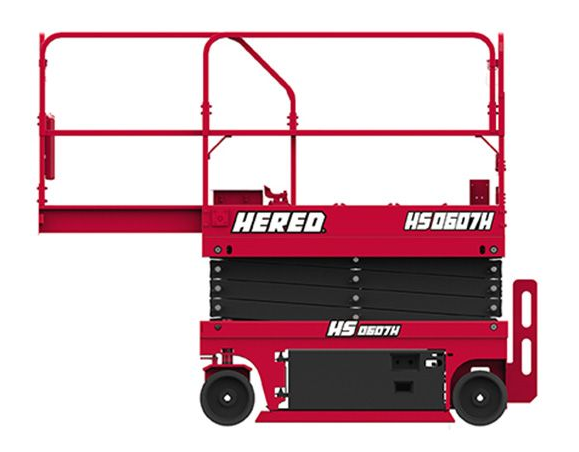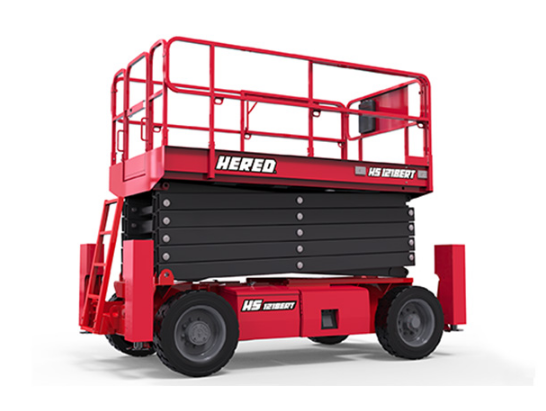Electric vs. Rough Terrain Scissor Lifts: A Comparative Analysis
In the realm of elevated work platforms, scissor lifts stand as indispensable tools for various industries, enabling workers to access heights safely and efficiently. However, when it comes to choosing between electric scissor lifts and rough terrain scissor lifts, the decision can be influenced by a range of factors, including the worksite's environment, requirements, and specific needs. In this comprehensive comparison, we delve into the key differences between electric and rough terrain scissor lifts, exploring their features, advantages, and limitations to help you make an informed decision.
Electric Scissor Lifts
Electric scissor lifts are renowned for their indoor usability and quiet operation. These lifts are powered by rechargeable batteries, making them an eco-friendly option that emits no harmful emissions. They are well-suited for tasks that demand precision and maneuverability. Let's explore the advantages and limitations of electric scissor lifts:
Advantages of Electric Scissor Lifts
1. Quiet Operation: Electric scissor lifts operate almost silently, making them ideal for indoor environments where noise reduction is crucial, such as in warehouses, factories, and retail spaces.
2. Zero Emissions: The use of electric power eliminates emissions, contributing to a cleaner and healthier work environment. This makes them a preferred choice for projects with strict environmental regulations.
3. Indoor Versatility: These lifts are designed for indoor use, featuring non-marking tires that prevent damage to sensitive flooring. They are an excellent choice for tasks that demand precise positioning.
4. Smooth Control: Electric scissor lifts offer smooth and gradual control, allowing operators to precisely position the platform. This control is essential when working in tight spaces.
Considerations for Electric Scissor Lifts
1. Limited Outdoor Use: Electric scissor lifts are not well-suited for rough terrains or outdoor conditions. Their tires and traction are optimized for indoor surfaces, which limits their adaptability.
2. Battery Life: While battery technology has improved, electric scissor lifts still have limited operating hours before needing recharging. This could disrupt continuous work if not adequately managed.
3. Lower Weight Capacity: Electric scissor lifts often have a lower weight capacity compared to rough terrain lifts. This can impact their suitability for heavy-duty tasks that require carrying larger loads.
Rough Terrain Scissor Lifts
Rough terrain scissor lifts are designed to excel in outdoor and challenging conditions. These lifts are equipped with robust features to navigate uneven terrains and are commonly used in construction, maintenance, and outdoor events. Let's delve into their advantages and limitations:
Advantages of Rough Terrain Scissor Lifts
1. Off-Road Capability: Rough terrain scissor lifts are built to handle rugged outdoor environments, including gravel, mud, and uneven surfaces. Their four-wheel-drive systems and durable tires provide excellent traction.
2. Higher Weight Capacity: These lifts typically have a higher weight capacity, making them suitable for heavy-duty tasks that involve carrying substantial loads, materials, and equipment.
3. Enhanced Reach: Rough terrain scissor lifts often offer greater platform heights and extended reach compared to their electric counterparts. This makes them ideal for projects that demand access to higher elevations.
4. Versatility: While designed for outdoor use, rough terrain scissor lifts can still be used indoors if necessary. This versatility makes them a versatile choice for a range of projects.
Considerations for Rough Terrain Scissor Lifts
1. Noise and Emissions: Unlike electric lifts, rough terrain lifts are powered by internal combustion engines that generate noise and emissions. This can limit their suitability for noise-sensitive environments and areas with strict emission regulations.
2. Less Precision: The controls on rough terrain lifts might not be as smooth and precise as those on electric lifts, which could impact tasks that require careful positioning.
Choosing the Right Lift for Your Needs
When deciding between electric and rough terrain scissor lifts, it's essential to consider the specific requirements of your project:
- Indoor vs. Outdoor: If your project is predominantly indoors and noise-sensitive, an electric lift might be the better choice. For outdoor projects on uneven terrains, a rough terrain lift is the more suitable option.
- Weight and Load: Consider the weight capacity you need for your tasks. If you require heavy lifting, rough terrain lifts are better equipped for such jobs.
- Height Requirements: If your project demands access to high elevations, rough terrain lifts often offer greater platform heights.
- Environmental Impact: Evaluate your environmental concerns. Electric lifts are environmentally friendly, while rough terrain lifts emit noise and emissions.
Conclusion
The choice between electric and rough terrain scissor lifts depends on the specific demands of your project. Each type has its strengths and limitations, and understanding these factors will guide you towards selecting the lift that best aligns with your needs, ensuring efficient and safe operations.






